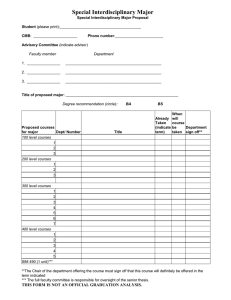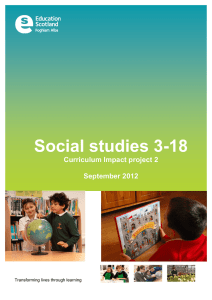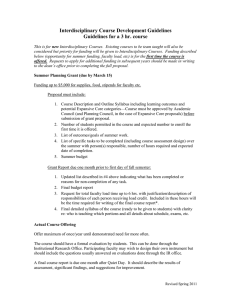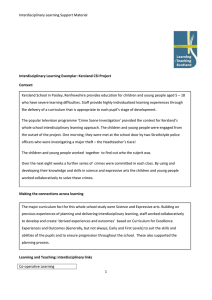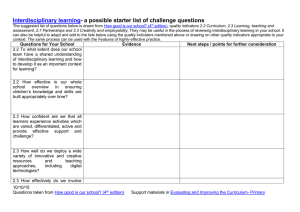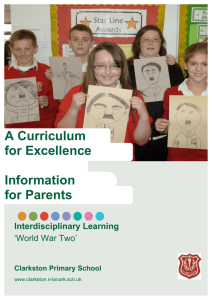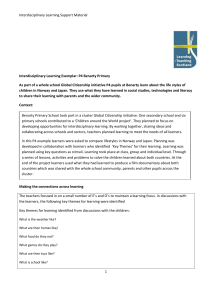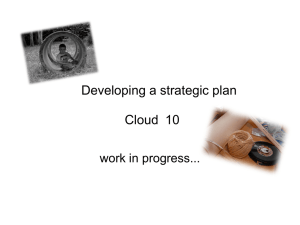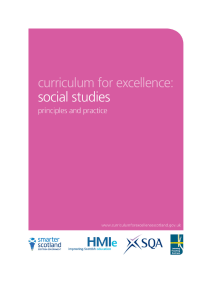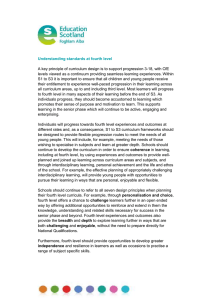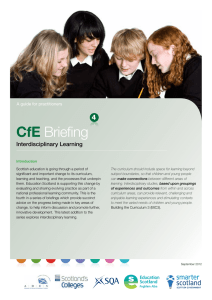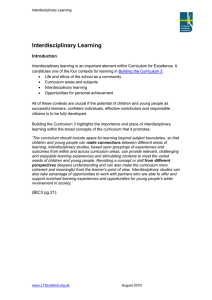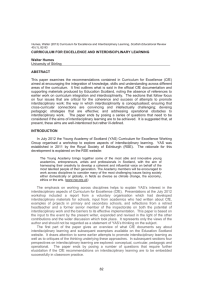Getting started – support for reflection and engagement social studies
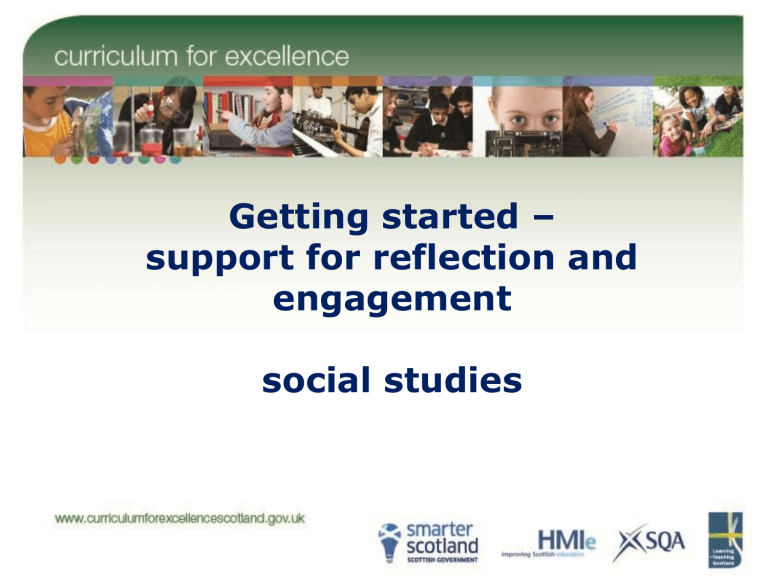
Getting started – support for reflection and engagement social studies
What changes have been made since the publication of the draft social studies framework?
Overall, feedback was positive, but important changes have been made.
What was said?
• Request that the extent and nature of the Scottish dimension be addressed.
• Request that the overlap between science and social studies, particularly in Earth science, be addressed.
• Skills progression could be made clearer.
• Questions were raised about the possibility that interdisciplinary links could lead to subjects disappearing.
What was done:
• Wording has been modified to reduce the perceived extent and nature of the
Scottish dimension.
• Overlaps addressed and interdisciplinary possibilities highlighted.
• Lines of development added which identify progression in the use of sources of information and examples given in the principles and practice.
• Idea that strong interdisciplinary learning depends on strong
disciplinary learning permeates all engagements.
Reflecting on the principles and practice in social studies
• What is the purpose of learning in social studies?
• What will learning in social studies enable children and young people to do?
• How are skills developed in social studies?
• What connections are there between social studies and other areas of the curriculum?
How are the experiences and outcomes structured in social studies?
The social studies experiences and outcomes have been organised into:
• People, past events and societies
• People, place and environment
• People in society, economy and business.
These lines of development recognise the special contribution made by each of the social subjects, whilst enabling them to reflect local contexts. The important concepts of social studies will offer children and young people opportunities for effective interdisciplinary working by making connections across and between subject boundaries.
Experiences and outcomes in social studies (1)
• Why do some statements cross more than one level?
These describe learning which needs to be revisited, applied in new contexts and deepened over a more extended period.
• Why is there a dotted line between third and fourth level?
This is to demonstrate the close relationship and likely overlap between the two levels. Fourth level will provide the depth of experiences based on prior learning from third level.
Experiences and outcomes in social studies (2)
• Why are there sometimes fewer statements at third level than in second and fourth?
This happens because of the particular significance of the third level as part of the entitlement for all young people. They represent a drawing together of a number of aspects of learning within social studies.
• Why are some statements in lighter text?
These are experiences and outcomes which are essential building blocks for a particular aspect of learning and development but which are to be found in a different curriculum area.
Getting started in social studies: some questions for discussion
• Building on your current practice, what are the implications for what and how you teach?
• How will you ensure the needs of all learners are met?
• Which experiences and outcomes could link within social studies, across other curriculum areas and the world of work to provide a coherent experience for learners?
• How might you ensure that learning and teaching reflects the values, purposes and principles of Curriculum for excellence?
Where do you go from here?
The journey may be different for everyone, but you may wish to consider some first steps towards change, for example:
• identifying and sharing effective practice
• identifying and prioritising professional development needs
• experimenting with learning and teaching approaches.
